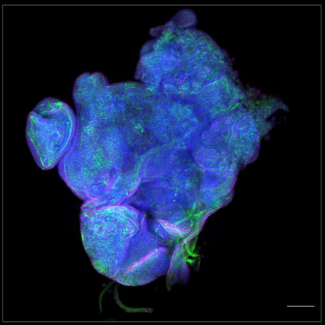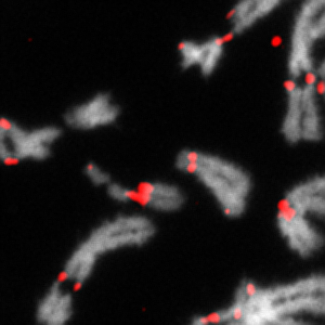
Questioning the link between pollution by magnetite particles and Alzheimer’s disease
A 2016 study showed that exposure to urban pollution involving magnetite particles played a role in the development of Alzheimer's disease. It began from the hypothesis that magnetite particles would generate chemical reactions that could cause oxidative stress for neurons. CNRS researchers have now called this connection into question, showing that it is very unlikely that magnetite is involved in neuron degeneration. Their work was published in Angewandte Chemie International Edition on October 11, 2018.
Magnetite, which is one of the main iron ores, is very stable, even over the geological timescale. However, a scientific study1 that appeared in 2016 suggested that magnetite nanoparticles coming from atmospheric pollution could penetrate the brain by inhalation and, by binding to amyloid peptide2 , cause the neuron degeneration responsible for Alzheimer’s disease.
A 2007 study3 described that magnetite could generate harmful oxidation reactions. The 2016 article presenting magnetite penetration into the brain and its binding to amyloid stated that atmospheric pollution was therefore a probable cause of Alzheimer’s disease.
Researchers from the CNRS Laboratoire de Chimie de Coordination reproduced the experiments under the same temperature and pH conditions as physiological conditions and have shown that magnetite cannot bind to amyloid peptide or cause oxidation reactions.
This result, which agrees with magnetite’s very high stability, therefore leads us to think that magnetite is inert in vivo and that it is therefore very unlikely that it is involved in the neuron degeneration observed in Alzheimer’s disease. This study must lead to careful rereading of the experimental work on the hazardous nature of magnetite in the human brain.
- 1B. Maher, I. A. M. Ahmed, V. Karloukovski, D. A. MacLaren, P. G. Foulds, D. Allsop, D. M. A. Mann, R. Torres-Jardón, L. Calderon-Garciduenas, Proc. Natl. Acad. Sci. USA 2016, 113, 10797-10801.
- 2Amyloid peptides are small proteins located in the brain, often found in the form of plaques in patients with Alzheimer's disease. Amyloids can bind to metals normally present in the brain, particularly copper and iron, whose quantity and distribution are disturbed by Alzheimer’s disease. The amyloid-metal complex can react with oxygen in the presence of reducers and generate reduced oxygen species (free radicals) that are toxic for neurons.
- 3L. Gao, J. Zhuang, L. Nie, J. Zhang, Y. Zhang, N. Gu, T. Wang, J. Feng, D. Yang, S. Perrett, X. Yan, Nat. Nanotechnol. 2007, 2, 577-583.
Magnetite Fe3O4 has no intrinsic peroxidase activity, and is probably not involved in Alzheimer's oxidative stress, Michelle Gumpelmayer, Michel Nguyen, Gábor Molnár, Azzedine Bousseksou, Bernard Meunier, Anne Robert. Angewandte Chemie International Edition, 2018.

